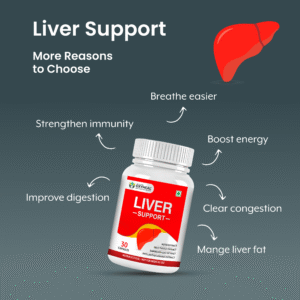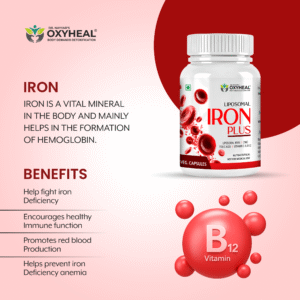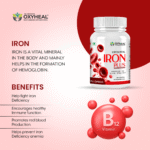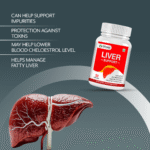Healing Cervical Pain through Ozone Therapy
Although the neck is an important part of our body, its care is often neglected by many. Despite the fact that it does not require much from us besides simple stretching exercises and quick Yoga sessions, people don’t pay attention to its condition unless they experience massive discomfort.
Cervical pain, commonly known as neck pain, refers to discomfort or pain in the neck region, specifically in the cervical spine, which is the seven vertebrae that make up the neck. It can be caused by various factors, such as muscle strain, poor posture, injuries, herniated discs, or degenerative conditions like arthritis.
Common causes of Cervical Pain
1. Muscle Strain: Overuse of neck muscles, poor posture, or sudden movements can lead to muscle strain and cervical pain.
2. Poor Ergonomics: Prolonged periods of sitting in an uncomfortable position, especially while working on a computer or using electronic devices, can contribute to cervical pain.
3. Injuries: Accidents, falls, or sports injuries that impact the neck area can result in cervical pain.
4. Herniated Discs: The gel-like center of a spinal disc may push through its outer lining, irritating nearby nerves and causing pain.
5. Degenerative Disorders: Conditions like osteoarthritis and degenerative disc disease can lead to the breakdown of cervical spine components, causing pain.
6. Pinched Nerves: Compression or irritation of nerves in the cervical spine can cause pain and discomfort.
7. Medical Conditions: Certain medical conditions, such as fibromyalgia or rheumatoid arthritis, can contribute to cervical pain.
Lifestyle choices and habits can contribute to cervical pain. Here are some factors
1. Poor Posture: Slouching, hunching over electronic devices, or maintaining an incorrect posture while sitting or standing for extended periods can strain the neck muscles.
2. Prolonged Desk Work: Spending long hours at a desk without proper ergonomic setup, including the position of the computer monitor, chair, and keyboard, can lead to cervical pain.
3. Lack of Physical Activity: Insufficient exercise and movement can result in weakened muscles, including those in the neck, making them more susceptible to pain and strain.
4. Sleeping Position: Sleeping in an awkward or unsupportive position can cause neck stiffness and discomfort.
5. Carrying Heavy Bags: Carrying heavy bags or backpacks on one shoulder can create an imbalance and strain on the neck and shoulder muscles.
6. Excessive Phone Use: Constantly looking down at your phone or other electronic devices for extended periods can contribute to neck strain, often referred to as “text neck.”
7. Stress: Emotional stress and tension can manifest physically, leading to muscle tightness and pain in the neck and shoulders.
Making positive lifestyle changes, such as maintaining good posture, incorporating regular exercise, ensuring ergonomic workspace setup, and managing stress, can help prevent or alleviate cervical pain. If pain persists, seeking advice from a healthcare professional is important for a proper diagnosis and treatment plan.
Cultivating healthy habits can significantly contribute to preventing cervical pain
There are certain habits that you can include in your day-to-day life to prevent to discomfort of cervical pain.
1. Maintaining Good Posture: You should be mindful of your posture while sitting, standing, and walking. Keep your spine aligned, and avoid slouching.
2. Ergonomic Workspace: Set up your workspace to promote good posture. Also, ensure that your computer monitor is at eye level and that your chair provides proper support.
3. Take Breaks: If you have a desk job, take regular breaks to stretch and move around. This helps prevent stiffness and muscle strain.
4. Neck Exercises: Incorporate neck exercises into your routine to strengthen and stretch the muscles. Simple movements like neck tilts, rotations, and stretches can be beneficial.
5. Use a Supportive Pillow: Choose a pillow that supports the natural curve of your neck while sleeping. Avoid using multiple pillows that might strain your neck.
6. Stay Active: Engage in regular physical activity to maintain overall health and strengthen your muscles, including those in the neck and shoulders.
7. Hydrate: Proper hydration is essential for maintaining the elasticity of intervertebral discs and preventing stiffness in the neck.
8. Limit Screen Time: Reduce the time spent looking down at screens. If using a phone or tablet, bring the device to eye level to avoid straining the neck.
9. Manage Stress: Practice stress management techniques, such as deep breathing, meditation, or yoga, to prevent tension from accumulating in the neck and shoulders.
10. Avoid Heavy Bags: If you carry a bag, distribute the weight evenly across both shoulders or use a backpack with adjustable straps.
Remember, everyone’s body is different, so it’s essential to listen to your own and adapt these habits to what works best for you. If you experience persistent or severe cervical pain, consult with a healthcare professional for personalized advice and treatment.
Treating Cervical Pain with Ozone Therapy
Even after making necessary changes in your daily life, if you are still experiencing constant Cervical pain, Ozone therapy can be a great solution for you.
Ozone therapy involves the administration of medical-grade ozone to treat various medical conditions. The potential mechanisms of ozone therapy include reducing inflammation, improving blood circulation, and modulating the immune system.
Ozone therapy has been explored for its potential benefits.
Some potential benefits that have been suggested in the broader context of ozone therapy include
1. Anti-Inflammatory Effects: Ozone has anti-inflammatory properties, which could help reduce inflammation in the cervical region and alleviate pain associated with inflammatory conditions.
2. Improved Blood Circulation: Ozone therapy enhances blood circulation, potentially promoting better oxygen and nutrient supply to the affected tissues in the neck, supporting the healing process.
3. Analgesic (Pain-Relieving) Effects: Ozone therapy has been proposed to have analgesic effects, possibly reducing pain perception and providing relief in certain cases.
4. Antimicrobial Properties: Ozone has antimicrobial properties, and it helps to combat infections that could contribute to cervical pain.
5. Stimulation of Healing Processes: Ozone therapy also stimulates the body’s natural healing processes, facilitating tissue repair and regeneration.
Jalandhar-based Oxyheal uses Ozone Therapy for healing various ailments including Cervical pain, Arthritis, Diabetes, Sinus Infections, Digestive problems, High Blood Pressure, and Acute and Chronic Infections among others. Contact us









